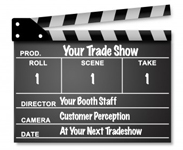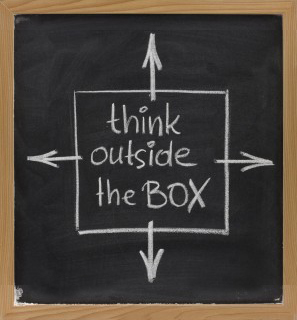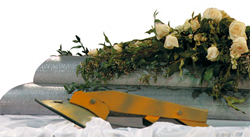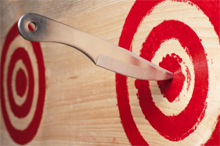Get An Apples-to-Apples Cost Comparison on Your Tradeshow Exhibit
Thinking About Changing Exhibit Companies?
Feel like your current tradeshow exhibit service company is holding you hostage? Are you getting the level of service you deserve at a reasonable cost? Is it time to look into a new provider? The most common way to start this process is to do some research, contact a few companies, and request some proposals. The problem, however, is that when the proposals come in, none of them end up looking alike. How are you to compare?
 When looking for a new tradeshow booth or services provider it is important to seek out “apples-to-apples” pricing: competitive quotations that are all including the same types of services.
When looking for a new tradeshow booth or services provider it is important to seek out “apples-to-apples” pricing: competitive quotations that are all including the same types of services.
Request an Apples-to-Apples Quotation
There are many different ways a tradeshow exhibit services company can write a quote, which can make comparing them difficult. Also, depending on the company you are dealing with, there can also be many different ways to hide costs that come after everything is said and done. It is important to make sure that all of the quotes you are comparing include everything you need. Otherwise, you may choose what looked to be the most inexpensive quote, but when your tradeshow ends, you can find yourself looking at an invoice with thousands of dollars you were not expecting to have to pay.
The best way to make sure that you are getting an apples-to-apples quotation is by sending companies a format for their proposals. All you have to do is take a current tradeshow exhibit services invoice and copy the descriptions of each line item and ask prospective vendors to fill in their prices for the same items. This way they know exactly what services to price and the final product will be quotations that you can easily compare. You can also learn a great deal about each bidder by seeing how willing they are to participate and how well they follow your directions.
Once you have the numbers, make sure to review each proposal for disclaimers and fine print. Once you’ve narrowed the field, interview each company that is being seriously considered and check their references.
These kinds of apples-to-apples quotations will save you time, and quite possibly a great deal of money.
Extraordinary Trade Show Displays: How to be Best in Show
The fundamentals of effective trade show displays boil down to your story, your staff, and your execution. Before and during the show, there will be plenty of distractions or gimmicks at other booths, but if you relate to your audience and to the context of the broader show, you won’t get lost in the din of the event.
The Best Story
 The best trade show displays tell a story—your story—clearly and engagingly. Vagaries, misdirection or over-generalized displays won’t do you or your brand justice. You have to assume that visitors have already been annoyed by other booths that take too long to understand. This doesn’t mean that you have to be boring or robotic in presenting your brand, but it should be relatively straightforward for people to ascertain your basic mission and offerings in about a minute. A clear and upfront story buys you time to expound on your latest projects, rather than clearing up confusion over the basics.
The best trade show displays tell a story—your story—clearly and engagingly. Vagaries, misdirection or over-generalized displays won’t do you or your brand justice. You have to assume that visitors have already been annoyed by other booths that take too long to understand. This doesn’t mean that you have to be boring or robotic in presenting your brand, but it should be relatively straightforward for people to ascertain your basic mission and offerings in about a minute. A clear and upfront story buys you time to expound on your latest projects, rather than clearing up confusion over the basics.
The Best Staff
Send some members of your staff around the show floor to explore other trade show displays. In this way, you’re taking advantage of your presence at the trade show by learning things you can only learn by actually being there. Pay particular attention to your competitors, of course. It’ll make the investment in the show that much more valuable.
When you’re knowledgeable about other displays, you can also anticipate visitors’ reactions, preempt their questions and explain how your services are different or superior to those of others on the floor.
The Best Technology
Remember that a trade show is powerful, old-fashioned, offline interaction. Even if you decide to use screens, computers or other gadgetry for demos, the particular presentations should be unique and unlike anything that a visitor can easily view online at home. At the same time, visitors to your display should be eager to go home and check out your site. The show doesn’t end when you pack up the display. If you present yourself right, it’s only the beginning.
Trade Show Success: Integrate Live Online Video
Trade shows have always been great PR opportunities because they get press coverage. For decades, companies have used trade shows to make major announcements or introduce new products. Usually, these announcements get more press coverage than they would ordinarily get because reporters covering the shows are looking for news.
 For the past few years, companies have been extending their news reach by using social media platforms such as Facebook or Instagram to provide live online video of company announcements, news conferences, trade show product demonstrations and other events directly from the trade show floor. All of these platforms incorporate live chat that can be used for “Q and A” sessions between company representatives and reporters, bloggers or the general public.
For the past few years, companies have been extending their news reach by using social media platforms such as Facebook or Instagram to provide live online video of company announcements, news conferences, trade show product demonstrations and other events directly from the trade show floor. All of these platforms incorporate live chat that can be used for “Q and A” sessions between company representatives and reporters, bloggers or the general public.
Now, some companies are cleverly reversing their trade show live streams to bring their entire company to the trade show. Some connect trade show attendees to company executives or technical representatives for live chat events. Other exhibitors are incorporating live feeds of their manufacturing facilities or service centers into their exhibits. The variety is almost endless.
Be Creative
Don’t limit your imagination about how to use live online video. Live video streams can be a great way to promote your exhibit before the show. It can be a great way to present highlights of a show when it is all wrapped up. Live video of product demonstrations and testimonials from the trade show floor can be powerful at generating online sales while the show is going on. If a company representative is making an important presentation at a show, consider how you can use online video of this presentation to promote your company and products.
Consider providing a show cam to your entire team “back at the office” or in the field
Live video can keep your entire company involved with the show. Think about running a daily live stream program from the show just for your company’s staff. It can be as simple as a daily wrap up of the big events from the show and observations of what the competition is up to.
Don’t push the boundaries of the technology too far
Technology can be great but it is no substitute for the live one-to-one contact that trade shows make possible. Make sure that your company is well represented by the people staffing your exhibit.
Plan for everything to go wrong
Live online video can be great but it is not always reliable. Make sure that you coordinate any live stream plan with the show staff and your tech support team. Test everything in advance, and then test it again. Make sure you have a contingency plan and that the live video broadcast is just a plus to your overall promotion and PR plan. The best way to have things go smoothly is to plan for problems.
Have you ever incorporated a live streaming video into your trade show sales effort?
Trade Show, Show Business: Put the “Show” Into Your Exhibit
When you are putting together a tradeshow exhibit, think about it as theater. You need to attract an audience, capture their imagination, and leave a memorable impression. To do that you need to set the stage and build an atmosphere that will draw people into your booth – bring them into your show.
 You need a great script and the best actors you can find
You need a great script and the best actors you can find
If you want great reviews, then you need to start with a great script. Then you need “actors” who can bring that script to life and who can improvise. Give them the perfect costumes and a stage setting that builds on your brand story, and your exhibit will draw prospects right into your show.
Don’t be afraid to be dramatic!
Some of the most imaginative, most successful trade show exhibits are done by companies who offer intrinsically boring products and services. They do not have the luxury of relying on people being interested in what they are selling, so they often work much harder to add entertainment value to their exhibit. These are some of the booths with the most creative themes and visual drama.
Go a bit outside the box, push the boundaries. Trade show attendees want to see something new and exciting. Just remember to stay consistent with your brand position and brand values.
Lights, camera, action
Well, OK – lights and action! One way to create visual interest is with your lighting design. Work with your designer to build a lighting concept that presents your ideas in a clear way to focus on your company’s competitive advantages. Take it to the next level by using lighting to do more than spotlight your product, use it to create a spotlighted stage for your booth team.
Make your show a tough act to follow
If you create a real show, your exhibit will be the one that people remember when they walk into your competitors’ booth and when they return to their day-to-day business after the show. It will be the one that they talk to their co-workers and associates about. And, perhaps best of all, it will be one of the exhibits that gets press extending your trade show marketing reach.
Trade Show Exhibit Design: “Think outside the box”
I have a friend who always seems to come up with a new, successful angle for every trade show. Recently, I asked her, “How do you do it?” The simple reply, “I always force myself and my team to think outside the box. I challenge everyone involved to do the unexpected and come up with new ways to attract attention and create excitement.”
 I thought about this advice for a moment. It rattled around in my head. At first, I thought, “I always think outside the box.” Then I started to really evaluate what this common expression means. It is an appealing concept, but is it the right approach for every company, for every brand? And did I really always “think outside the box”? Yes, or at least my goal is always to come up with new ideas and “out of the box” solutions. I just never used that expression to describe my efforts.
I thought about this advice for a moment. It rattled around in my head. At first, I thought, “I always think outside the box.” Then I started to really evaluate what this common expression means. It is an appealing concept, but is it the right approach for every company, for every brand? And did I really always “think outside the box”? Yes, or at least my goal is always to come up with new ideas and “out of the box” solutions. I just never used that expression to describe my efforts.
What is the “box”?
The trade show’s “box” can be big or small. It can have lighting and dramatic banners. It is the expected trade show exhibit, staffed by smiling people representing a company trying to get leads, offering a free gift or a few samples or some sales material. The box is ordinary, stamped out, one after another just the same in different colors. The box is forgettable.
“Outside the box” exhibits
These are the exhibits that give an attendee a new perspective. These are the exhibits that make lasting impressions on the people who see them. To be effective they require more than just being novel, creative ideas; they need to be thoughtful and suitable for the target audience and the brand. Very few trade show exhibits truly rise to this challenge.
Should every company strive to do the unexpected?
As long as the exhibit is consistent with the brand position and brand values, and successfully promotes your products or services, the answer is, “Yes!” It is a real trick to balance inspiring creative with the hard-hitting sales message that this tough economy demands, but when you achieve it, the results can be stunning.
How to get “outside the box” ideas
The first step in creating a breakthrough exhibit is to build a team that shares that commitment. Once you have assembled that team, make sure that they consistently focus on really solving the marketing challenge that faces you in new and interesting ways.
Trade Show Exhibit Design: Motion Captures Attention
Few exhibitors use motion to draw visitors to their trade show exhibit, and this presents an opportunity for the exhibitors who do make effective use of motion. Impactful motion can be created in 2-D with digital video or interactive displays, or in 3-D with people or other moving objects.
Effective 2-D Motion Techniques
 Trade show floors are loaded with digital display monitors but they are rarely used to create motion. Most often they are used to show videos of products, digital slide shows or other programming that is meant to be watched from a few feet away. This can be an important element of a booth but may not draw someone into your booth.
Trade show floors are loaded with digital display monitors but they are rarely used to create motion. Most often they are used to show videos of products, digital slide shows or other programming that is meant to be watched from a few feet away. This can be an important element of a booth but may not draw someone into your booth.
To attract passersby place displays above head level and in a location that can be seen easily from at least 10 or 20 feet away. Using large display screens or an array of displays can help make a big statement.
If you want to attract people with something moving, the programming is what really matters. Program your display with attention-getting video or graphics. Use large graphic images, bright colors, stark contrast and incorporate motion.
Effective 3-D Motion Techniques
A few exhibitors have created trade show exhibits that incorporate the latest 3-D technology, but most 3-D motion elements used in trade show exhibits are people or objects that are in motion.
People are the most common 3-D motion elements. A product demonstration filled with activity and animated behavior attracts attention. A performer doing any kinetic activity – dancing, juggling, walking on stilts, and so on – can attract large crowds.
The other common 3-D motion elements are physical objects that move. A motion element can include banners, streamers or tension fabric structures that are well above eye level and in motion.
Effective Use of Motion
Motion elements are highly memorable and can leave a lasting impression with trade show attendees. The most effective way to incorporate motion techniques into a trade show booth is to make sure that the moving element reinforces the brand identity and the booth concept. As with every powerful communications tool, integration is essential to success and using motion elements as a gimmick just to attract attention without properly integrating the message can actually undermine your overall efforts.
Used wisely, motion can attract visitors to your trade show exhibit and has the capacity to build awareness and leave a lasting impression of your company and brand.
Putting the Show back into Trade Show Exhibits!
ExhibitorOnline published a case history about a trade show exhibit that brilliantly executed a complete 360 degree trade show exhibit. The exhibit was presented by PayLock LLC, a manufacturer of a self-release car-booting system called the SmartBoot at the International Parking Institute Conference & Expo (IPI) in Las Vegas.
 Since the company’s 2004 launch, PayLock’s president, Cory Marchasin, hoped to snuff out traditional car boots. “My partners and I acquired a car-boot company in 2004, but rather than continue with this traditional technology, we looked for ways to develop a competitive edge and differentiate ourselves from the competition,” Marchasin says. “As part of our creative process to build a better boot, we decided it wasn’t actually the product that needed refining so much as it was the business process itself. Traditional boots and the process associated with them just didn’t seem to make sense anymore.”
Since the company’s 2004 launch, PayLock’s president, Cory Marchasin, hoped to snuff out traditional car boots. “My partners and I acquired a car-boot company in 2004, but rather than continue with this traditional technology, we looked for ways to develop a competitive edge and differentiate ourselves from the competition,” Marchasin says. “As part of our creative process to build a better boot, we decided it wasn’t actually the product that needed refining so much as it was the business process itself. Traditional boots and the process associated with them just didn’t seem to make sense anymore.”
PayLock decided to bury competing products with a funeral-based booth theme. Their exhibit including everything from in-booth caskets to after-hours wakes, PayLock’s “morose strategy used dead-pan humor to rub out the competition — and slay its own expectations in the process.” Here are a few highlights:
- The entire trade show exhibit and program was infused with product messages and tongue-in-cheek tactics to keep the laughs coming.
- Pre-show promotion: An obituary for the traditional boot ran in the show directory, available starting the day before the show opened.
- Two memory boards with images of the traditional boot and the paper permit paid homage to the Smart-Boot’s “deceased” competitors.
- Following the show’s ribbon-cutting ceremony, PayLock pallbearers hoisted the coffins onto their shoulders and led a processional to PayLock’s booth. A five-piece jazz band accompanied the processional, recreating a New Orleans-style funeral march.
- The two coffins were positioned near the back of the exhibit. Monitors above the coffins displayed the time of the next funeral presentation along with whimsical images during the eulogies.
- Tissue boxes, black carpet, and casket sprays adorned the surreal 16-seat in-booth funeral parlor.
- PayLock staffers read the eulogy, which explained the traditional boot’s fate through excerpts from the traditional boot’s journal. Attendees that read pre-scripted eulogies of their own were entered into a drawing for an iPad.
- After the funeral, the bereaved filed past the caskets to pay their respects and collect free T-shirts.
The exhibit was not a hit with competitors, but was very popular with show attendees, and, most importantly, generated a lot of qualified sales leads. The most impressive aspect of this exhibit was how it seamlessly integrated the company’s sales message into an unlikely and memorable branded event.
You can read the entire case history at ExhibitorOnline.com, click here!
Study concludes Face-to-Face Trade Shows Capture Attention Best
As companies look to find ways to make every marketing dollar work harder, some trade show exhibitors have tried to reduce expenses by participating in virtual trade shows. Initial results have shown that virtual trade shows generate few leads and a higher percentage of unqualified leads. Now a report from Cornell University has started to shed some light on the behavioral effect of live vs. virtual meetings.
 The Center for Hospitality Research at Cornell University recently released a report, The Future of Meetings: The Case or Face to Face, that concluded, “The intangibles of face-to-face meetings can be more potent than virtual and online technology when it comes to capturing the imaginations and enthusiasm of attendees.”
The Center for Hospitality Research at Cornell University recently released a report, The Future of Meetings: The Case or Face to Face, that concluded, “The intangibles of face-to-face meetings can be more potent than virtual and online technology when it comes to capturing the imaginations and enthusiasm of attendees.”
The study authors found that “real” events hold the attention of attendees and allow the formation of valuable personal relationships making trade shows, conventions and corporate events well worth the investment.
The report stated, “Large face-to-face meetings and events are the best option when a business or organization needs to capture attention necessary for a new or different strategy, relationship or product.”
The report concluded that face-to-face events are the best option for:
- Capturing attention: Attendees have fewer distractions on the exhibit floor and are less tempted to check e-mails or do other multi-tasking chores than they would when taking part in a virtual event.
- Inspiring a positive emotional climate: Attendees like to associate with their peers. Even people working on virtual technology attend physical conferences.
- Networking and relationship building: Socializing and making new friends in an industry can have great appeal. Experts predict informal networks of people within an organization that are bonded by a group loyalty will become even more important than traditional chains of command as the economy recovers.
The entire report can be found at Cornell’s Center for Hospitality Research website.
Trade Show Exhibit Strategies: Be the “Talk of the Show”
Become the “Talk of the Trade Show”
Every show has that one exhibitor that everyone talks about – the “Talk of the Show”. It is not always the biggest or most expensive booth, but it is often the booth that has the best marketing idea. Here are some ways that unlikely exhibitors became the “Talk of the Show”:
- Rare autographed merchandise that appeals to the target customer.
Pick the right item and the right celebrity for your target customer and, if used as part of a themed exhibit and contest, your exhibit could be a show standout. Select a rare, one-of-a-kind item to be used in a prize drawing, add some related, less expensive items to make the contest more exciting. Then come up with a themed contest and exhibit to make the entire concept and booth an entertainment event. - Film a live show and make attendee the stars.
Most people love to see themselves on camera. Set up a Live Cam and Web Cam from the show floor and put on a show. Broadcast your “show” on monitors so people can watch their colleagues be stars. At one trade show, an exhibitor created a talk show set and broadcast live at the trade show and online. They had a “band” with a couple of musicians and recorded music, a show host and invited attendees to be their guests on the show. Guests could be interviewed about the product or sing favorite songs with modified lyrics that integrated the featured product. The program got the highest ratings at this show. - A housewares magic act.
 Many exhibitors hire magicians or entertainers to attract exhibit traffic, but every now and then a company comes up with an act that breaks out of the ordinary. A ceramic knife manufacturer took a knife throwing act to a new level – pitting their ceramic knives against the competition. The knife throwing act demonstrated that while some ceramic knives shattered easily, the company’s knives were truly shatter resistant and could survive even knife throwing.
Many exhibitors hire magicians or entertainers to attract exhibit traffic, but every now and then a company comes up with an act that breaks out of the ordinary. A ceramic knife manufacturer took a knife throwing act to a new level – pitting their ceramic knives against the competition. The knife throwing act demonstrated that while some ceramic knives shattered easily, the company’s knives were truly shatter resistant and could survive even knife throwing. - Extreme Demos.
If you have an extreme product, consider having an extreme demo. At one trade show, Taser offered to shock attendees, and hundreds took up the offer and ended up on the floor. - Great food.
If you are exhibiting at a non-food show, think about offering a crowd-pleasing, made-to-order food item. The trick is to avoid the commonly offered freshly baked cookies and coffee drinks. For example, at a tech show, Fios, Inc. of Portland offered smoothies – and had people lined up for hours. While attendees waited for their smoothie, the booth staff scanned their badges and introduced attendees to Fios e-discovery legal support services and software.
There are many ways to attract attention – prizes, demos, entertainers and free food are common – but when done in an unexpected way, it can make your booth the trade show exhibit that everyone talks about.
Trade Show Secrets to Success
For small businesses, trade shows can be a great opportunity to reach out to a targeted audience and deliver your marketing message. The goal, of course, is to ultimately convert potential sales leads into satisfied, happy customers.
Despite brutal economic conditions, trade shows still offer a significant payoff for small businesses. Even in today’s business world of websites, social media, emails and voicemails, trade shows still offer one of the best opportunities for companies to build relationships with face-to-face contact.
 Let’s take a look at some trade show secrets (shhh, don’t tell anyone) that could help your company succeed in the trade show world, regardless of your budget.
Let’s take a look at some trade show secrets (shhh, don’t tell anyone) that could help your company succeed in the trade show world, regardless of your budget.
Pick a show in a vertical, niche market. Instead of exhibiting at a trade show at which all your competitors will be, fighting to gain the attention of the same audience, pick an offbeat, smaller show. Every business has smaller, vertical markets in which they would like to gain a foothold. The advantage is these shows typically will cost less, and you can focus on delivering your message to a new audience, not on besting your competitors’ efforts.
Don’t listen to the hype. Instead of relying on the word of salespeople desperate to sell you a booth, talk to other exhibitors to find out what type of experience they’ve had not only working with the exhibit management but also the results they have experienced from exhibiting.
Attend the event first. If you’re considering exhibiting at a really large (read: expensive) trade show, attend it first. Walk the floor and ask both the attendees and the exhibitors about their experience at the show. Find out whether they felt attending or exhibiting was worth their time and money.
Skip new trade shows. Don’t invest in unproven commodities, especially in these tough economic times when even the larger shows can struggled for survival. Save your trade show budget for shows with a proven track record of success that you know can deliver the ROI you need to justify the expense.
Speak up. If you’re a small business with limited resources, exhibiting at trade shows might be beyond your economic means. That doesn’t mean you can’t add trade shows to your marketing mix. Contact the show management and inquire as to any possible opportunities to be a speaker or panel expert.
Get them while they’re hot. After the show is over, don’t let months go by before contacting sales prospects. Follow up with those attendees who took the time to stop by and hear your company’s pitch within two weeks of the show.
Archives
- July 2021
- June 2021
- May 2021
- April 2021
- October 2018
- September 2018
- August 2018
- July 2018
- June 2018
- May 2018
- April 2018
- March 2018
- February 2018
- January 2018
- December 2017
- November 2017
- October 2017
- September 2017
- August 2017
- July 2017
- June 2017
- May 2017
- April 2017
- March 2017
- February 2017
- January 2017
- December 2016
- November 2016
- October 2016
- September 2016
- August 2016
- July 2016
- June 2016
- May 2016
- April 2016
- March 2016
